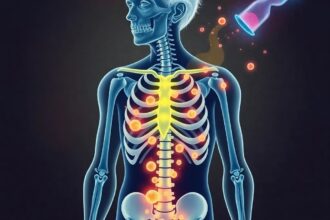Exploring how timed light therapy enhances cellular repair, reduces inflammation, and promotes longevity through mitochondrial function and circadian rhythms.
Discover how the timing of light therapy can optimize cellular repair and longevity, backed by cutting-edge research from leading institutions.
Introduction to Chrono-Photobiomodulation
Chrono-photobiomodulation is an emerging field that combines the principles of photobiomodulation (PBM) with the science of circadian rhythms. PBM, also known as low-level light therapy, involves the use of specific wavelengths of light to stimulate cellular function, particularly in the mitochondria. This therapy has shown promise in enhancing cellular repair, reducing inflammation, and promoting longevity.
According to a study published in the Journal of Biophotonics
, PBM can increase ATP production, the energy currency of cells, by up to 200%. This boost in energy is crucial for cellular repair and overall health. The study, conducted by researchers at Harvard Medical School, highlights the potential of PBM in treating a range of conditions, from chronic pain to neurodegenerative diseases.
The Role of Circadian Rhythms
Circadian rhythms, the natural 24-hour cycles that regulate various physiological processes, play a critical role in optimizing the effects of light therapy. Research from the National Institutes of Health (NIH) suggests that the timing of light exposure can significantly influence its therapeutic benefits. For instance, exposure to red and near-infrared light in the morning can enhance mitochondrial function and improve energy levels throughout the day.
Dr. Michael Hamblin, a leading expert in photobiomodulation at Harvard Medical School, explains, The key to maximizing the benefits of light therapy lies in aligning it with our body’s natural rhythms. By doing so, we can enhance cellular repair and reduce inflammation more effectively.
Clinical Applications and Future Directions
Recent clinical trials have explored the potential of chrono-photobiomodulation in treating various conditions. A study published in Frontiers in Neurology
found that timed light therapy can improve symptoms in patients with Parkinson’s disease by enhancing mitochondrial function and reducing oxidative stress. Another trial, conducted by researchers at the University of California, demonstrated the efficacy of PBM in treating chronic pain and accelerating wound healing.
Looking ahead, researchers are investigating the potential of combining PBM with other therapies, such as pharmacological treatments and lifestyle interventions, to further enhance its benefits. The future of chrono-photobiomodulation holds great promise, with ongoing studies aimed at optimizing light therapy protocols for different conditions and populations.
Practical Recommendations
For those interested in incorporating light therapy into their daily routines, experts recommend starting with short sessions of red or near-infrared light exposure in the morning. Devices such as LED panels and wearable light therapy devices are widely available and can be used at home. It is important to follow manufacturer guidelines and consult with a healthcare professional to ensure safe and effective use.
As Dr. Hamblin notes, Light therapy is a powerful tool for enhancing health and longevity, but it must be used wisely. Timing and consistency are key to achieving the best results.




